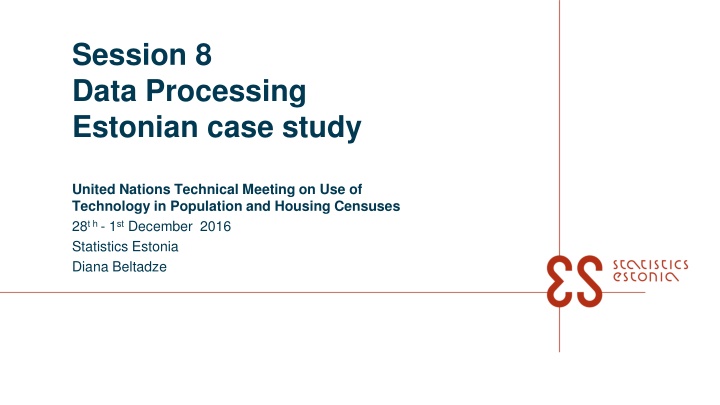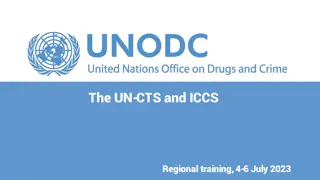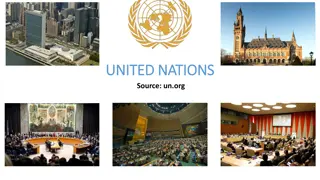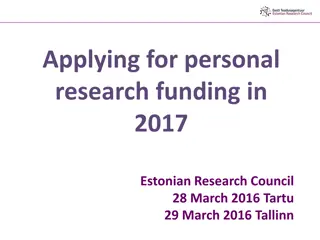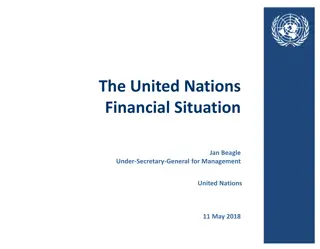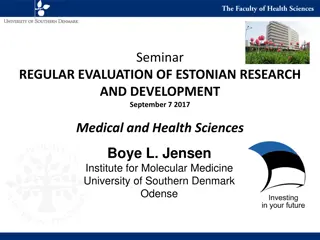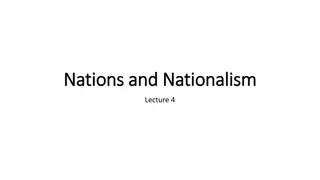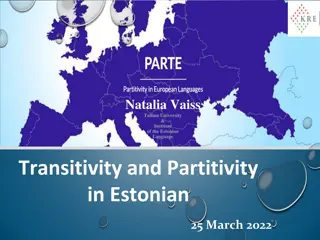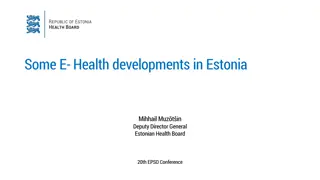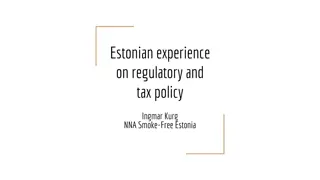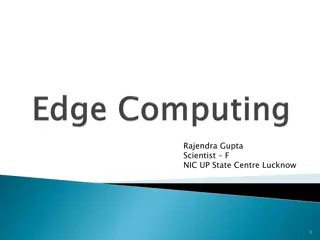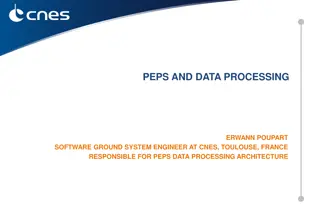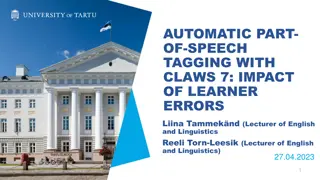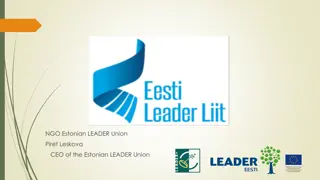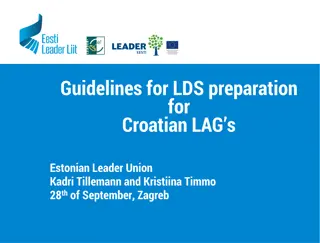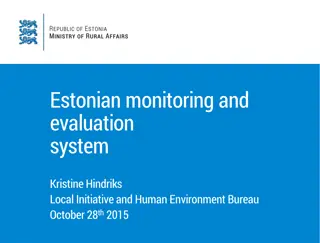Estonian Case Study: Data Processing for United Nations Technical Meeting
This case study delves into Estonia's data processing methods for the United Nations Technical Meeting on the use of technology in population and housing censuses. It covers aspects such as data arrangement, processing stages, challenges faced, team structure, and encoding practices.
Download Presentation

Please find below an Image/Link to download the presentation.
The content on the website is provided AS IS for your information and personal use only. It may not be sold, licensed, or shared on other websites without obtaining consent from the author.If you encounter any issues during the download, it is possible that the publisher has removed the file from their server.
You are allowed to download the files provided on this website for personal or commercial use, subject to the condition that they are used lawfully. All files are the property of their respective owners.
The content on the website is provided AS IS for your information and personal use only. It may not be sold, licensed, or shared on other websites without obtaining consent from the author.
E N D
Presentation Transcript
Session 8 Data Processing Estonian case study United Nations Technical Meeting on Use of Technology in Population and Housing Censuses 28t h - 1stDecember 2016 Statistics Estonia Diana Beltadze
Data processing started on the 31.12.11 and lasted up to the 31.10.12
Issues after data collection Identification of persons (missing personal codes) Identification of addresses Elimination of duplicates Encoding Majority of identification and encoding exercises were completed by the end of April.
Primary data correction team Data correction manager Operator for ID codes Coders Operator for addresses Operator for duplicates Senior coder Coder
Encoding of text answers Variable Occupation EMTAK Religion VS-RTK Citizenship Language Nationality Dialect Address Manual % 98,1 91,9 68,0 50,4 71,4 0,4 73,3 52,9 100,0 Automat % 1,9 8,1 32,0 49,6 28,6 99,6 26,7 47,1 0,0
Data processing work flow Population register VVIS I STAGE VVIS Buildings register, Land Board Data collection system, primary data correction Education register II stage VAIS Data correction system, imputations, controls etc
Data processing, stage 2 VAIS is a collection of tools and technologies aimed at automating data processing (Phase 5 in GSBPM). In essence, the task of check, clean, and transforming statistical activity data can be identified as taking the raw data from one or more sources and transforming it to data warehouse(observation registry) for statistical analyse
Metadata driven template based tool Template driven approach provides an universal solution for three main goals: Create an easy to use statistical data processing tool requiring minimal programming skills for transformation package creation. Create a metadata driven process-oriented and automated statistical data processing tool. Create an extendable data transformation tool.
Data processing with VAIS includes: Automating and speeding up data transformation Raw data, transformation metadata and source data audit trails Metadata driven template based tool Balancing automation and manual intervention
Balancing automation and manual intervention Manual data processing Automated data processing RAW data OK? Data Warehouse Metadata (validation and transformation rules)
Implementation VAIS development 05.2010- 10.2011 Data processing of Population and Housing Census 2011 (01.11.2011- 30.10.2012) Reuse administrative data (2012) Data collecting system for administrative data (ADAM) and eSTAT development for prefilling questionnaires in eSTAT with administrative data (annual bookkeeping report). (31.08.2011). VAIS is used for converting administrative data into the statistical data format. (for the year 2012 i.e for the reference year 2011 data collection) Data processing of other statistical activities (first pilots 2012) Data processing of next registry based Population and Housing Census (pilot 2014)
VAIS budget Investments 0,7 million EUR Support 0,1-0,2 million EUR (11.2011-12.2012) VAIS development duration was 18 months
Conclusion: different ways to avoid and correct mistakes using data from population register controls in time of filling in questionnaire using classifications in questionnaire identification persons and addresses coding removing duplicates additional controls imputation
